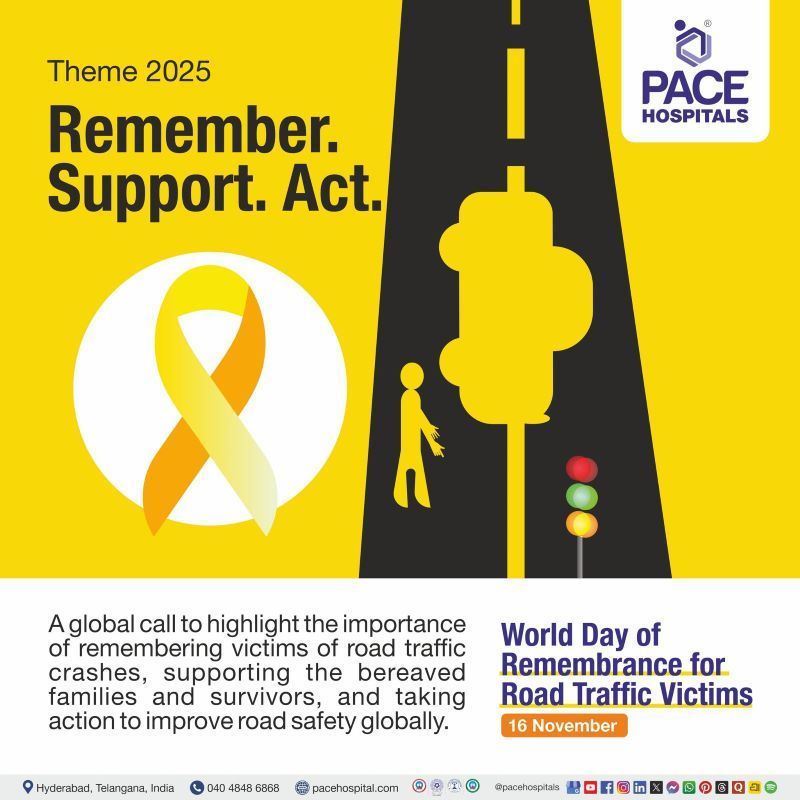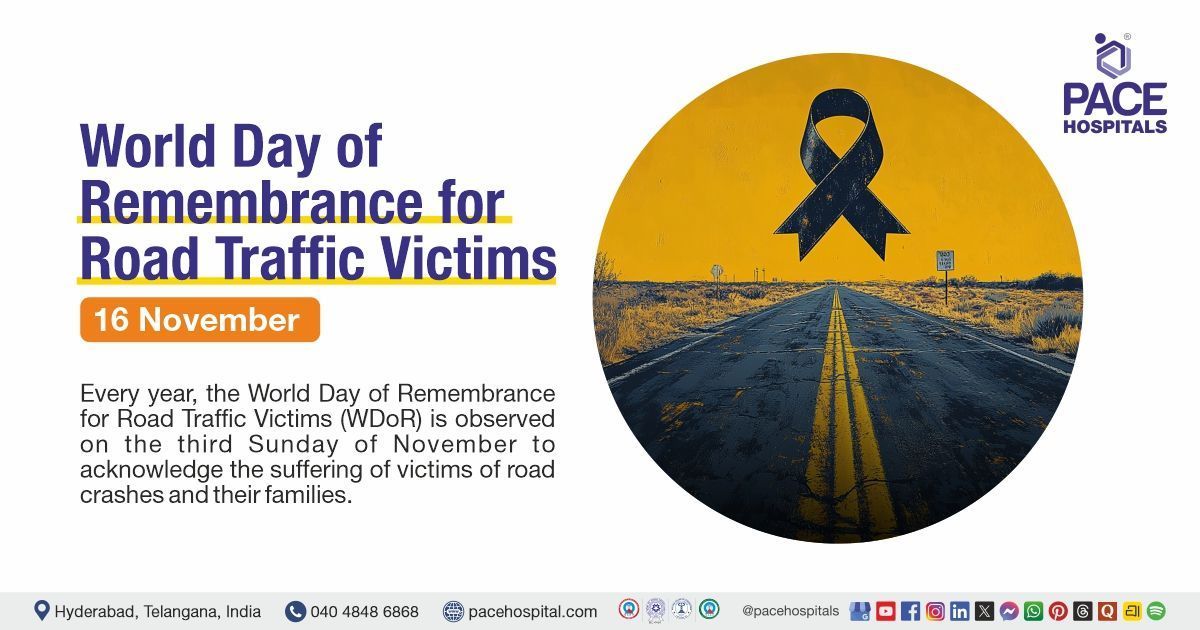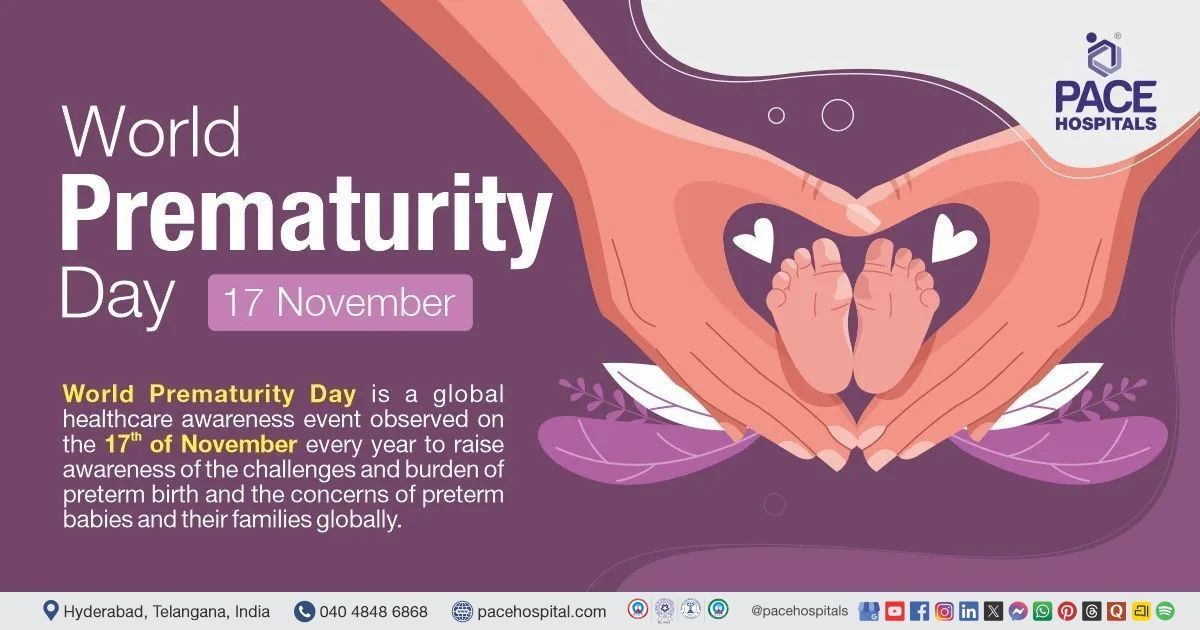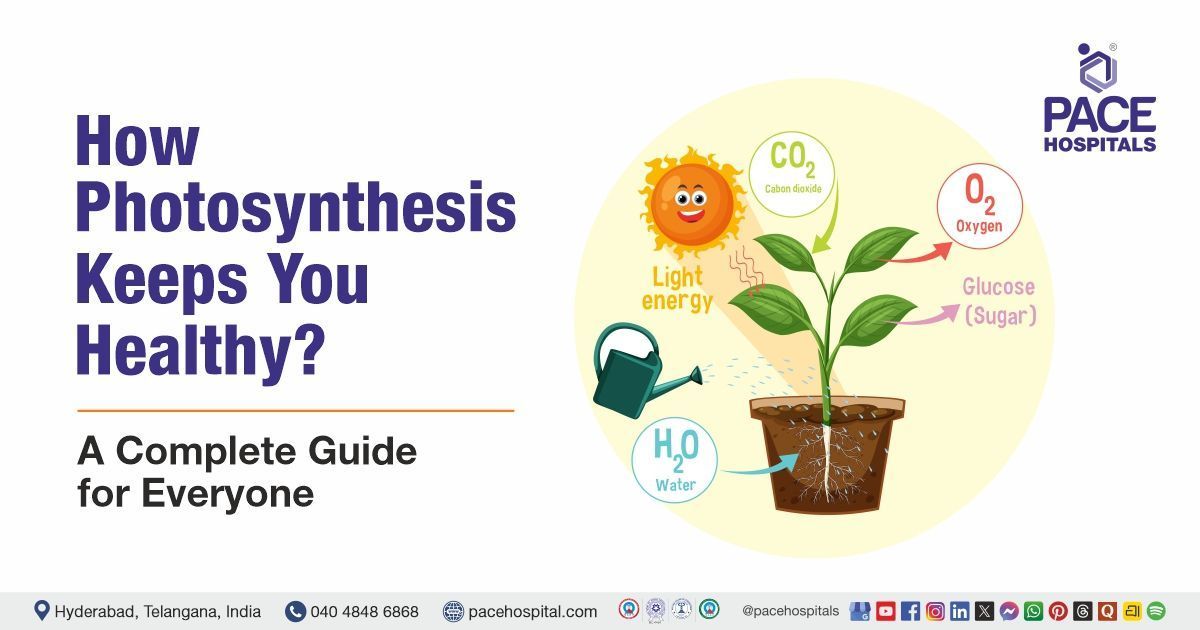World Day of Remembrance for Road Traffic Victims, 16 November 2025 – Theme, History & Importance
PACE Hospitals
Every year, the World Day of Remembrance for Road Traffic Victims (WDoR) is observed on the third Sunday of November to acknowledge the suffering of victims of road crashes and their families. In 2025, it is observed on 16 November.
This global observance draws attention to the magnitude of road traffic crashes, which cause more than
13 lakh deaths and
500 lakh injuries annually worldwide. It highlights the need for continual action by governments, law enforcement agencies, health professionals, and the public to promote safer roads, stronger laws, and compassionate care for victims.
Role of Global Cooperation and World Health Organization (WHO)
One of the main organisations supporting World Day of Remembrance campaigns is the World Health Organisation (WHO), working with the UN Road Safety Collaboration (UNRSC). This commemoration is in accordance with the Second Decade of Action for Road Safety 2021–2030, that aims to decrease deaths and injuries from traffic by 50% by that year.
Road crashes are currently the main cause of death worldwide for children and young adults between the ages of 5 and 29. Rapid motorisation, inadequate safety regulations, and a lack of emergency response capabilities increase the burden in many low- and middle-income nations. To provide strong and resilient healthcare services, health systems need to include trauma and emergency care for victims of traffic accidents.

World Day of Remembrance for Road Traffic Victims Day 2025 Theme
This year, 2025, the World Day of Remembrance for Road Traffic Victims theme is “Remember. Support. Act”. This theme highlights the importance of remembering victims of road traffic crashes, supporting the bereaved families and survivors, and taking action to improve road safety globally.
Year-by-Year Themes for World Day of Remembrance for Road Traffic Victims (WDoR):
- World Day of Remembrance for Road Traffic Victims 2024 theme: That Day
- World Day of Remembrance for Road Traffic Victims 2023 theme: Remember • Support • Act
- World Day of Remembrance for Road Traffic Victims 2022 theme: Remember • Support • Act
- World Day of Remembrance for Road Traffic Victims 2021 theme: Act for Low Speeds / Remember • Support • Act
- World Day of Remembrance for Road Traffic Victims 2020 theme: First Responders
History of World Day of Remembrance for Road Traffic Victims
The World Day of Remembrance was first established in 1993 by the RoadPeace organisation in the United Kingdom to remember all those killed and injured on the world’s roads.
In the year 2005, the UN General Assembly adopted the Resolution 60/5, recognising the day as a global observance and calling on all member states to promote road safety efforts and honour victims, families, and responders who work tirelessly to save lives after crashes.
Since then, the day has become an international occasion for reflection, remembrance, and renewed commitment to Vision Zero - a global approach to eliminate all road traffic fatalities and serious injuries.
Importance and Significance of WDoR
The World Day of Remembrance has many objectives that align with the global mission of road safety and prevention:
- Paying tribute to victims: Acknowledging the memory of those individuals who lost their lives or were severely injured on the roads.
- Helping families: Showing support for survivors, friends, and families who are experiencing grief.
- Recognising first responders: Valuing emergency workers, police, and medical staff who deal everyday with traumatic road crash consequences.
- Promoting prevention: Encouraging stronger safety measures - better roads, safer vehicles, responsible driving, and strict enforcement of speed, helmet, seat-belt, and drink-drive laws.
- Advocating for justice: Calling for legal and social support for victims and ensuring fair treatment and accountability.
Road Safety - A Continuing Global Challenge
Road crashes not only take lives but also place a heavy burden on families, healthcare systems, and national economies. WHO reports that road traffic injuries cost most countries 3% of their GDP annually.
To address this, WHO recommends the following preventive measures:
- Implementing and enforcing road safety laws: Strict laws on speed, seat belts, drunk driving, helmets, and child restraints reduce crashes and save lives.
- Designing safer roads: Safe infrastructure like pedestrian crossings and cycle lanes prevents accidents and protects vulnerable road users.
- Building safer vehicles: Vehicles with modern safety features minimize injuries during crashes.
- Strengthening trauma and emergency care systems: Quick and effective trauma care improves survival and recovery after road crashes.
- Raising public awareness: Education and advocacy promote safer behavior and community support for road safety initiatives.
Share on
Request an appointment
Fill in the appointment form or call us instantly to book a confirmed appointment with our super specialist at 04048486868











